Integrating Smart Technology in Modern Forest Management
- August 8, 2024
- 0 comment
Integrating smart technology into modern forest management is revolutionizing the way forests are monitored, maintained, and conserved. Advanced tools such as drones, remote sensing, and Geographic Information Systems (GIS) enable foresters to collect and analyze data with unprecedented precision. These technologies facilitate real-time monitoring of forest health, allowing for the early detection of issues like pest infestations, disease outbreaks, and illegal logging activities. Additionally, smart technology enhances the efficiency of forest management practices by optimizing resource allocation and improving decision-making processes.

For instance, predictive modeling powered by artificial intelligence (AI) can forecast forest growth and assess the impacts of climate change, helping managers to develop more effective conservation strategies. The integration of smart technology not only improves the sustainability of forest ecosystems but also supports the livelihoods of communities that depend on these natural resources. As the world faces increasing environmental challenges, embracing smart technology in forest management is essential for ensuring the resilience and vitality of forests for future generations.
Table of Content
- Definition and Examples of Smart Technology
- Applications of Smart Technology in Forest Management
- Benefits of Integrating Smart Technology
- Challenges and Considerations
Definition and Examples of Smart Technology
Smart technology encompasses a range of advanced tools and systems that utilize digital and automated processes to enhance efficiency, accuracy, and decision-making. In forestry, these technologies include drones, remote sensing, Geographic Information Systems (GIS), Internet of Things (IoT) devices, and Artificial Intelligence (AI) and Machine Learning (ML) algorithms.
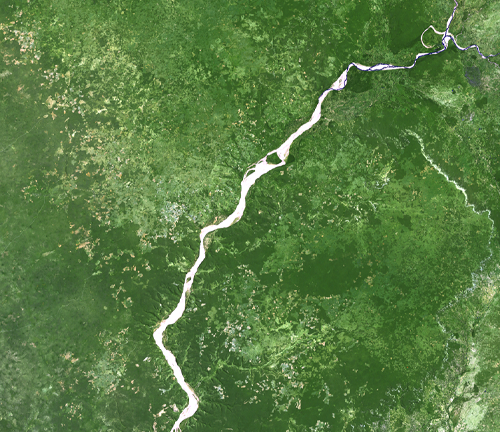
Drones
Drones, or Unmanned Aerial Vehicles (UAVs), have become invaluable in forest management. They provide high-resolution aerial imagery and can access difficult-to-reach areas, enabling detailed surveys of forest conditions.
Remote Sensing
Remote sensing involves the use of satellite or aerial imagery to monitor and analyze forest ecosystems. This technology helps in mapping forest cover, detecting changes over time, and assessing environmental impacts.
Geographic Information Systems (GIS)
GIS is a powerful tool for spatial analysis and mapping. It integrates various data sources to create detailed maps and models of forest landscapes, aiding in planning and management activities.
Internet of Things (IoT) Devices
IoT devices, such as sensors and cameras, collect real-time data on environmental conditions, wildlife movements, and forest health. This data is transmitted to central systems for analysis and action.
Artificial Intelligence (AI) and Machine Learning (ML) Algorithms
AI and ML algorithms analyze large datasets to identify patterns and make predictions. In forestry, they are used for predictive modeling, optimizing resource use, and automating routine tasks.
Data Collection and Analysis
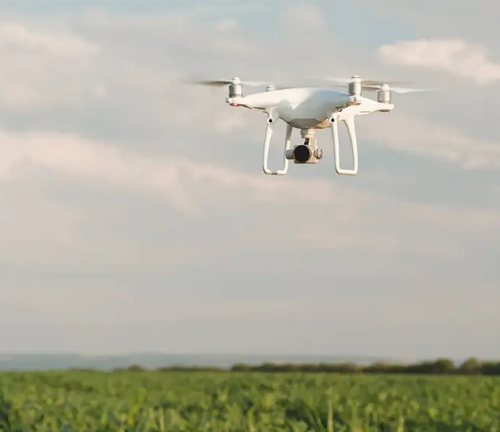
Use of Drones and Remote Sensing for Aerial Surveys
Drones and remote sensing technologies provide comprehensive aerial surveys, capturing high-resolution images and data on forest structure, canopy health, and land use changes.
Real-time Data Gathering with IoT Sensors
IoT sensors deployed throughout forests gather continuous data on temperature, humidity, soil moisture, and other critical factors. This real-time information helps foresters respond quickly to changing conditions.
Forest Health Monitoring

Early Detection of Pest Infestations and Diseases
Smart technology enables early detection of pests and diseases through remote sensing and IoT sensors, allowing for timely interventions to prevent widespread damage.
Monitoring Tree Growth and Forest Density
Continuous monitoring of tree growth and forest density through drones and remote sensors helps in tracking forest health and productivity over time.
Resource Management
Optimizing Water and Soil Resources
IoT sensors provide data on soil moisture and nutrient levels, helping foresters optimize water and soil management practices for healthier forests.
Efficient Allocation of Human and Financial Resources
Smart technology streamlines operations by providing accurate data, enabling more efficient allocation of resources and reducing unnecessary expenditures.
Predictive Modeling and Forecasting
Predicting Forest Growth Patterns
AI and ML algorithms predict forest growth patterns based on historical data and current conditions, aiding in long-term planning and management.
Assessing the Impacts of Climate Change
Predictive models assess the potential impacts of climate change on forest ecosystems, helping managers develop adaptive strategies.
Conservation and Protection
Preventing Illegal Logging and Poaching
Smart technology enhances surveillance and monitoring, helping to prevent illegal logging and poaching activities through real-time alerts and detailed monitoring.
Enhancing Wildfire Detection and Management
Advanced sensors and AI systems detect wildfires early and predict their spread, enabling more effective and timely firefighting efforts.
Benefits of Integrating Smart Technology
Increased Efficiency
- Streamlining Forest Management Operations
Smart technology automates routine tasks, streamlining forest management operations and increasing overall efficiency. - Reducing Labor and Operational Costs
Automation and accurate data collection reduce the need for manual labor and lower operational costs, freeing up resources for other critical activities.
Improved Decision-Making
- Data-Driven Strategies for Better Outcomes
Access to accurate, real-time data supports data-driven decision-making, leading to better outcomes in forest management. - Enhanced Accuracy in Forest Inventories and Assessments
Smart technology provides precise data, enhancing the accuracy of forest inventories and ecological assessments.
Sustainability
- Promoting Sustainable Forestry Practices
Smart technology promotes sustainable practices by optimizing resource use, reducing waste, and minimizing environmental impact. - Long-term Conservation of Forest Ecosystems
By improving monitoring and management, smart technology supports the long-term conservation of forest ecosystems, ensuring their resilience and vitality.
Challenges and Considerations
Technical Challenges
- High Initial Costs and Maintenance
The adoption of smart technology involves high initial costs and ongoing maintenance expenses, which can be a barrier for some forest management organizations. - Need for Skilled Personnel and Training
Effective use of smart technology requires skilled personnel and comprehensive training, necessitating investment in education and capacity building.
Data Privacy and Security
- Protecting Sensitive Environmental Data
Ensuring the privacy and security of environmental data collected by smart technology is crucial to prevent misuse and protect sensitive information.
Infrastructure and Accessibility
- Ensuring Access to Remote and Rural Forest Areas
Deploying smart technology in remote and rural areas can be challenging due to infrastructure limitations and accessibility issues. - Integrating Technology with Existing Forestry Practices
Integrating new technologies with traditional forestry practices requires careful planning and adaptation to ensure seamless operation and maximum benefit.
Frequently Asked Questions (FAQs)
1. What is smart technology in forest management?
Smart technology in forest management refers to the use of advanced tools and systems such as drones, remote sensing, Geographic Information Systems (GIS), Internet of Things (IoT) devices, and Artificial Intelligence (AI) and Machine Learning (ML) algorithms to enhance the efficiency, accuracy, and sustainability of forest management practices.
2. How do drones benefit forest management?
Drones provide high-resolution aerial imagery and can access hard-to-reach areas, allowing for detailed surveys of forest conditions, monitoring of tree health, and detection of illegal activities like logging and poaching.
3. What role does remote sensing play in forestry?
Remote sensing involves the use of satellite or aerial imagery to monitor and analyze forest ecosystems. It helps in mapping forest cover, detecting changes over time, and assessing environmental impacts, providing a comprehensive view of forest health and dynamics.
4. How are GIS used in forest management?
Geographic Information Systems (GIS) are used to create detailed maps and models of forest landscapes, integrating various data sources. This helps in planning, resource allocation, and monitoring environmental changes, facilitating informed decision-making.
5. What are IoT devices, and how do they help in forestry?
Internet of Things (IoT) devices include sensors and cameras that collect real-time data on environmental conditions, wildlife movements, and forest health. This data aids in timely decision-making and enhances the ability to monitor and manage forests effectively.
6. How do AI and ML algorithms contribute to forest management?
AI and ML algorithms analyze large datasets to identify patterns and make predictions. In forestry, they are used for predictive modeling, optimizing resource use, and automating routine tasks, improving overall management efficiency and sustainability.
7. What are the main applications of smart technology in forest management?
Smart technology is applied in various areas, including data collection and analysis, forest health monitoring, resource management, predictive modeling and forecasting, and conservation and protection. These applications help in early detection of issues, optimizing resource use, and enhancing forest conservation efforts.
8. What are the benefits of integrating smart technology in forest management?
Integrating smart technology increases efficiency by streamlining operations and reducing costs, improves decision-making through data-driven strategies, and promotes sustainability by supporting sustainable practices and long-term conservation of forest ecosystems.
9. What challenges are associated with adopting smart technology in forestry?
Challenges include high initial costs and maintenance, the need for skilled personnel and training, data privacy and security concerns, infrastructure and accessibility issues, and the integration of new technologies with existing forestry practices.
10. How can smart technology help in preventing illegal logging and poaching?
Smart technology enhances surveillance and monitoring capabilities through real-time alerts, high-resolution imagery, and detailed tracking, making it easier to detect and prevent illegal logging and poaching activities in forests.
11. How does smart technology improve wildfire detection and management?
Advanced sensors and AI systems detect wildfires early and predict their spread, allowing for more effective and timely firefighting efforts, thereby reducing the impact of wildfires on forest ecosystems.
12. Are there any examples of successful integration of smart technology in forest management?
Yes, there are numerous case studies and examples where smart technology has been successfully integrated into forest management, leading to improved monitoring, resource allocation, and conservation outcomes. These examples highlight the potential of smart technology to transform forest management practices.

Gilbert Griffin
Forestry AuthorGilbert Griffin is a forest management expert specializing in sustainable practices, forest health, conservation, and land management. With extensive knowledge in pest control, disease management, and habitat restoration, Gilbert develops strategies to preserve forest ecosystems and biodiversity. Passionate about the natural world, Gilbert adapts to changes in forest management and stays updated through continuous learning. Gilbert also provides seasonal advice to optimize forest care throughout the year.



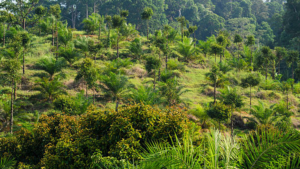

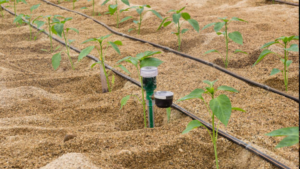

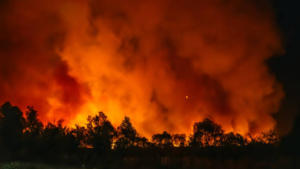


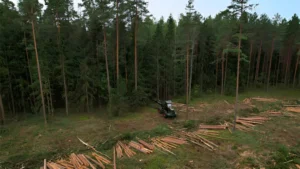
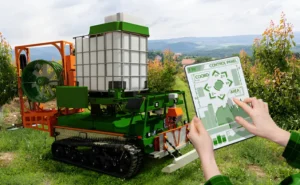

Leave your comment